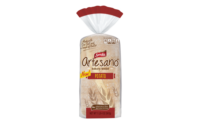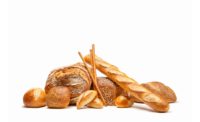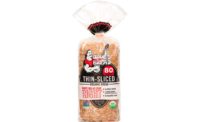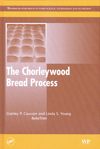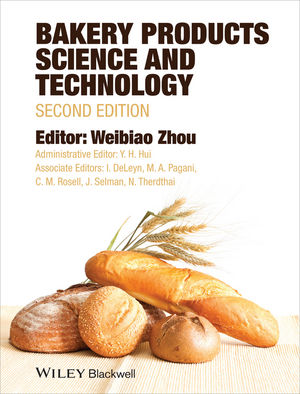Irish Potato Bread

Irish potato bread, also known as “boxty,” began as a recipe of necessity due to the abundance of potatoes and soft texture of wheat grown in Ireland. Crunchy soda bread is customarily an accompaniment to a main meal to soak up gravy and is also likely to appear at breakfast.
As the name suggests, potato bread is made by replacing a portion of the regular wheat flour in traditional bread with either mashed potatoes or dehydrated potato flakes. The ratio of potato to wheat flour affects the density of the bread, because the potato dilutes the gluten content.
In this recipe, created along with Bruce Weinstein for Potatoes USA, potato gives the bread a soft, luxurious consistency. Riced potato melts into the dough for a velvety texture, and grated potato adds contrast by providing a slight crunch. Russet potatoes have the perfect starch balance to keep the bread moist and tender.
Irish potato bread is perfect all year round topped with jam, dunked in a rich stew or served with barbecue to sop up the sauce.
Recipe
Two ¾-lb russet potatoes
1 large egg plus 1 large egg white
¹/³ cup canola oil, plus additional for
greasing the baking sheet
¾ cup fat-free milk
2 tablespoons minced chives (or the
green part of a scallion)
½ teaspoon caraway seeds
3¼ cups all-purpose flour, plus additional
for dusting and kneading
1½ tablespoons baking powder
1 teaspoon salt
Vegetable oil or shortening, as needed
Procedure
Bring one inch of water to a boil over high heat in a vegetable steamer or a large saucepan fitted with a portable vegetable steamer. Peel one potato and cut into eighths; steam the pieces until tender, about 15 minutes. Rice or mash pieces in a large bowl; set aside to cool for 15 minutes. Position the rack in the center of the oven; preheat the oven to 375°F. Lightly oil a large baking sheet with canola oil dabbed on a paper towel. Peel the other potato and grate it through the large holes of a box grater. Squeeze of any excess moisture; add to the riced or mashed potatoes. Stir in the egg, egg white, oil, milk, chives and caraway seeds until fairly smooth. Add 3¼ cups flour, baking powder, and salt; stir until the mixture forms a soft but sticky dough. Lightly flour a clean work surface and hands. Turn the dough out onto the floured surface and knead for one minute, adding flour in one tablespoon increments to keep the dough from turning too sticky. Too much flour and the dough turns tough; it should remain a little tacky but workable. Shape into an 8-inch circle, flatten slightly keeping the loaf mounded at its center, and place on the prepared baking sheet. Use a sharp knife to score an “X” in the top of the dough, cutting into dough about ½ inch. Bake until golden brown, firm to the touch, and somewhat hollow-sounding when tapped, about 55 minutes. Cool one hour on a wire rack before slicing and serving.
Looking for a reprint of this article?
From high-res PDFs to custom plaques, order your copy today!



